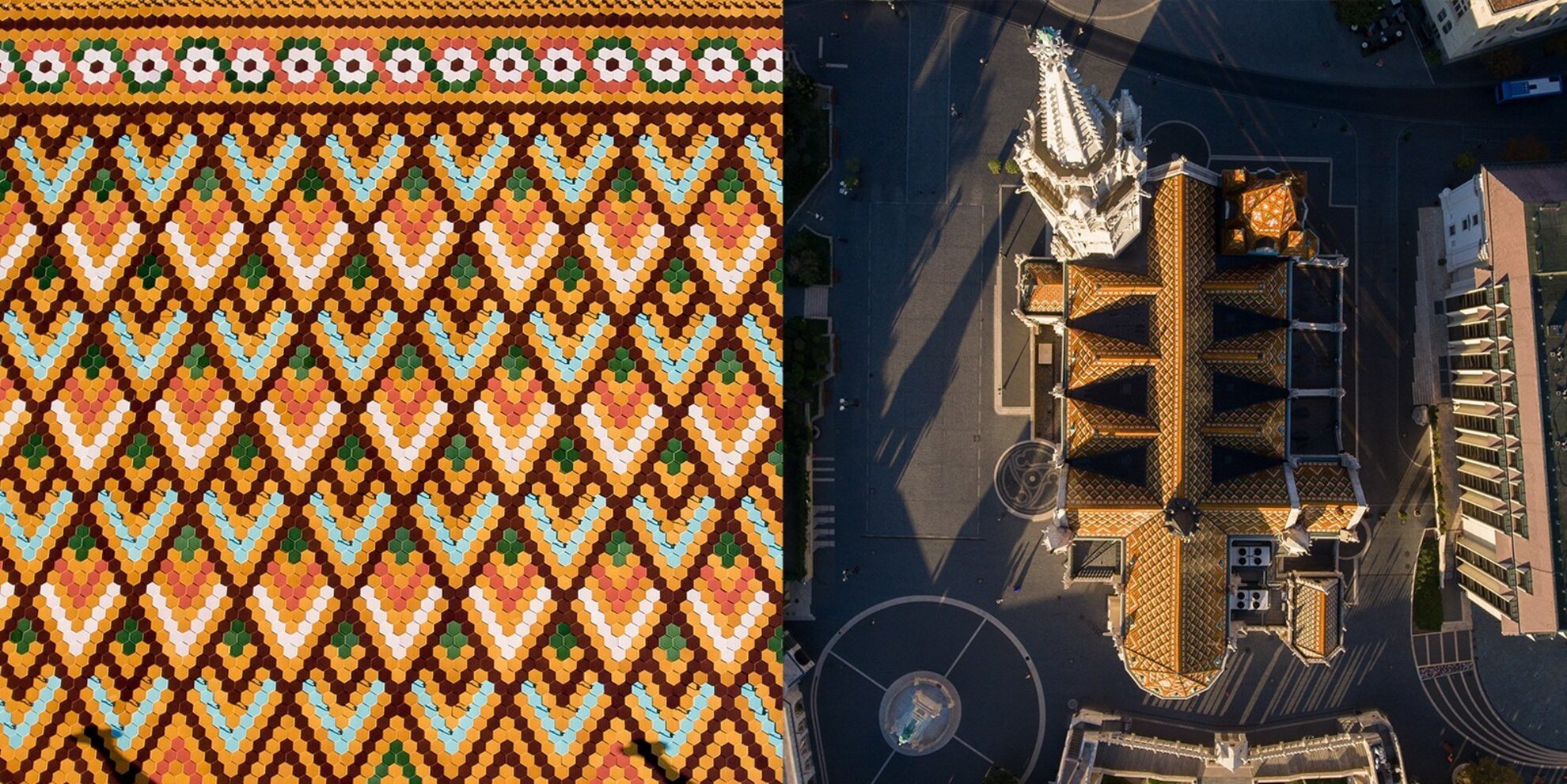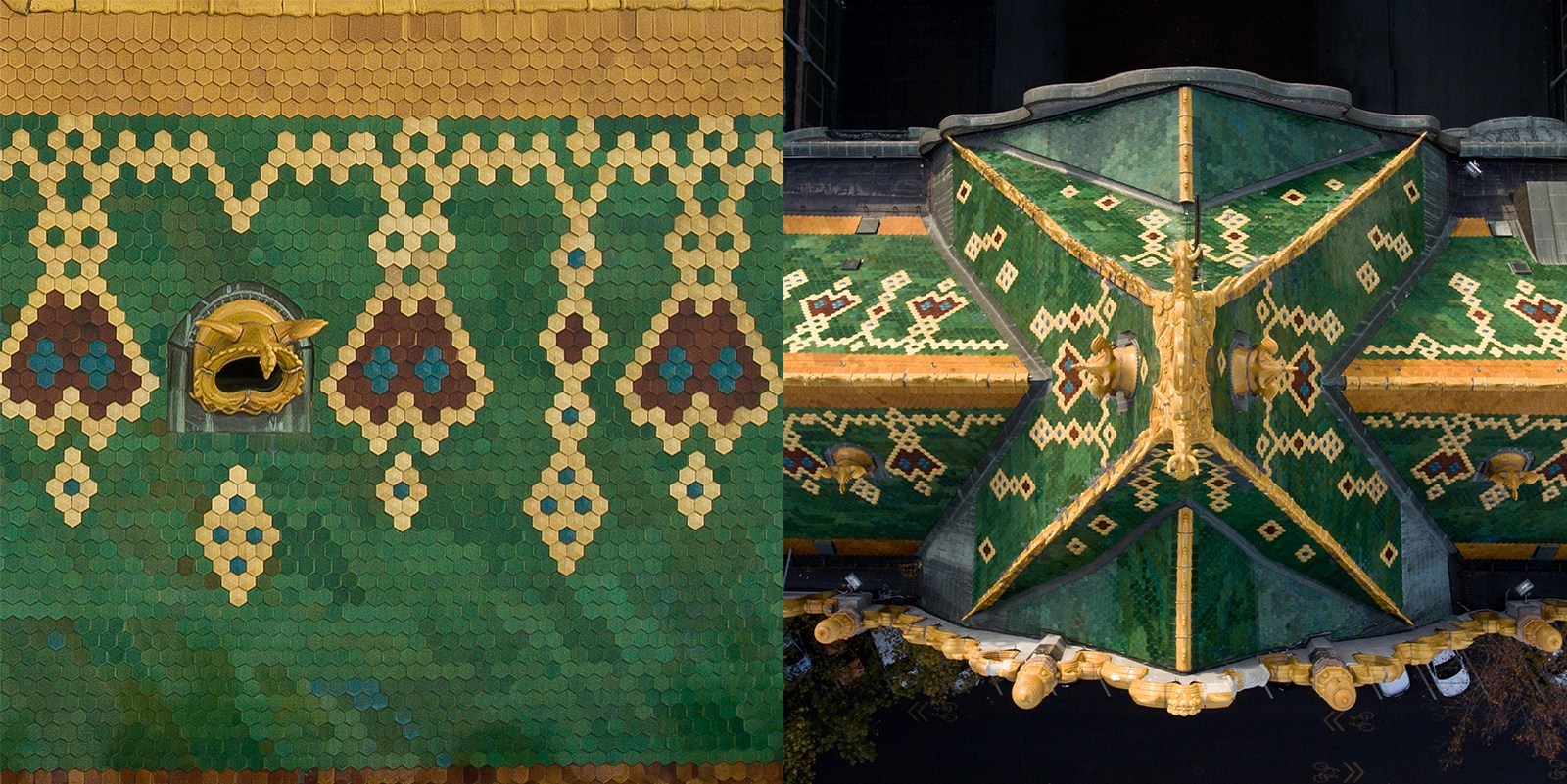Budapest is beautiful from a bird’s eye view, by virtue of the endless amount of hidden detail and the tiling manufactured by Hungary’s famous Zsolnay factory. At the last turn of the century, these vibrantly coloured tiles were easily replaceable, affordable and offered endless opportunities for creative architects to create beauty, making them extremely popular all around Budapest.
Milán Radics, who has just taken first prize at the 37th Hungarian Press Photo Exhibition and was ranked among the top five photographers at Pictures of the Year International, sent up his drone above some of Budapest’s most beautiful buildings. “I was stuck in a traffic jam and I was really annoyed about wasting so much time. Hours just go by and helplessness takes over you. But I like to focus on the positives and this is what I did in the car. I looked up on the sky above the Grand Boulevard and imagined that I was a bird. It would be so amazing, I thought, to forget about traffic jams and just admire Budapest’s colourful roofs. The idea of this series was born there and then and was followed by research, preparation and shooting.”
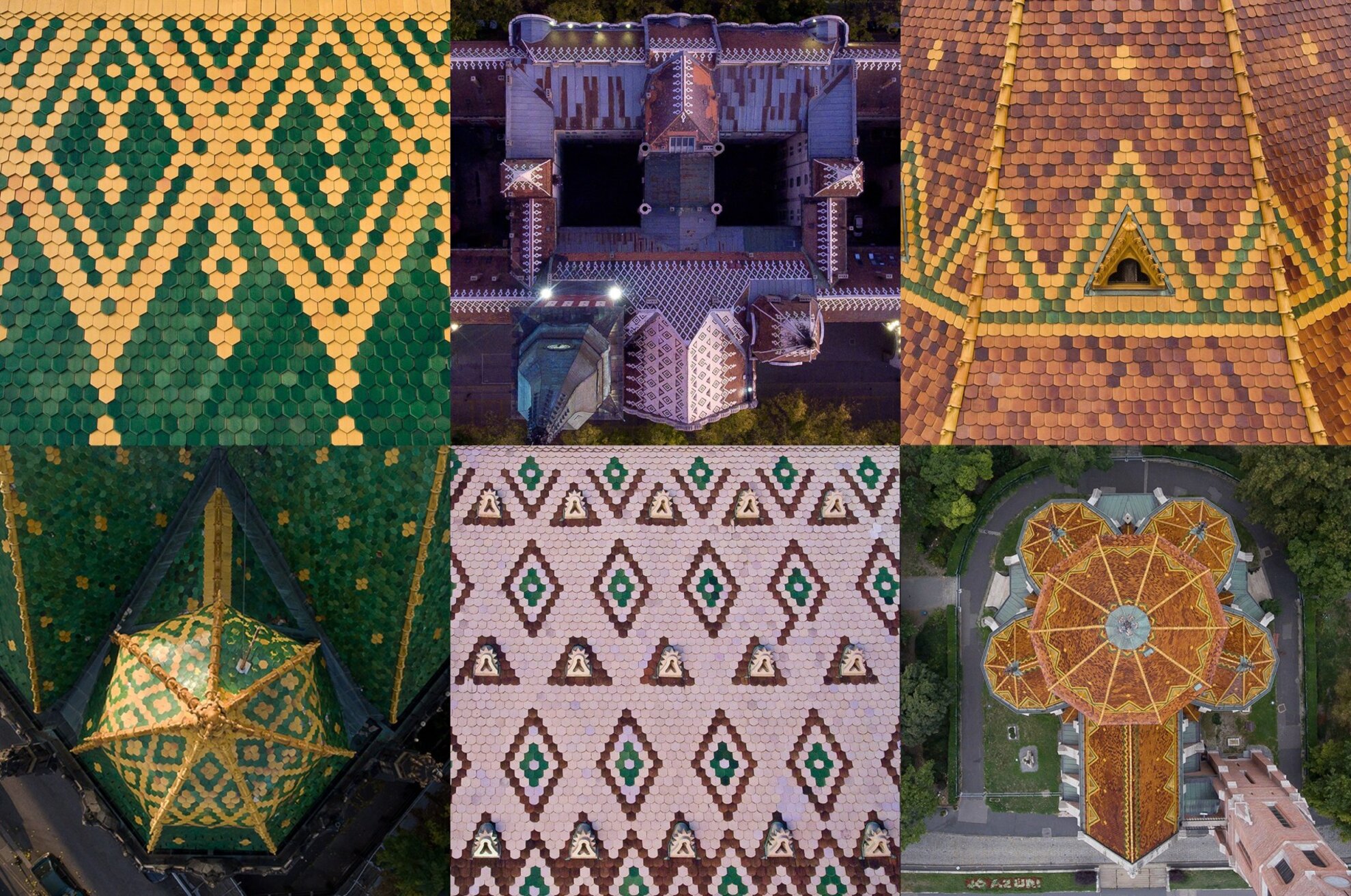
The most acclaimed virtuoso who made use of Zsolnay tiling was the outstanding exponent of Hungarian Art Nouveau, Ödön Lechner, the country’s own Gaudí. His first building, the Museum of Applied Arts, was given a highly controversial welcome in 1896, because of the duality of the folk-art elements mingled with Eastern influences. The public mockingly called it the ‘Palace of the Maharaja’, but today, Budapest would not be the same without this beauty.
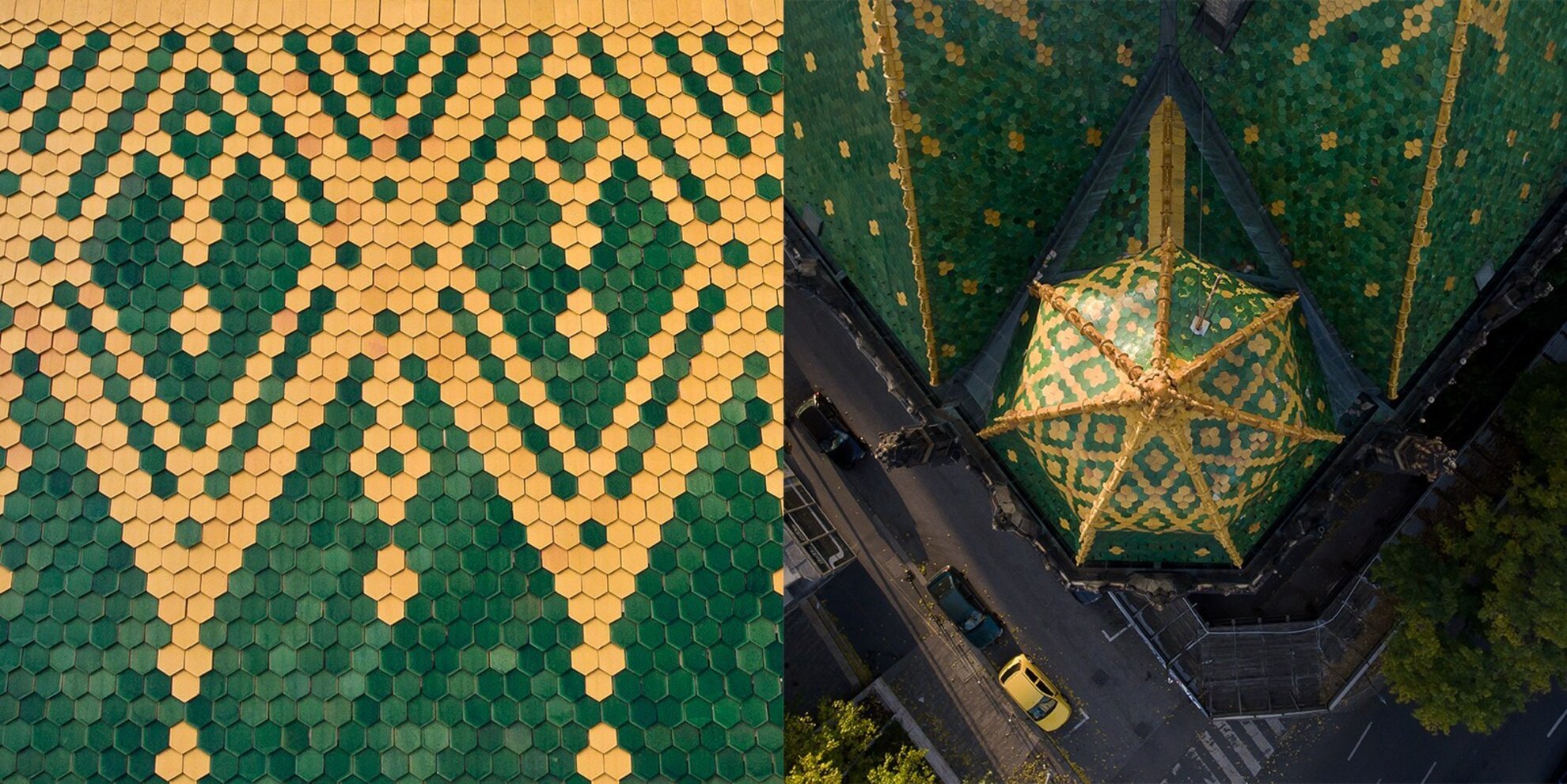
The same goes for the Hungarian Institute of Geology on Stefánia út. This building has the most beautiful blue tiles, reminiscent of sea waves. Legend has it that even Habsburg Emperor Franz Josef exceeded his appropriate 15 minutes dedicated for any visit and stared at this building for an hour.
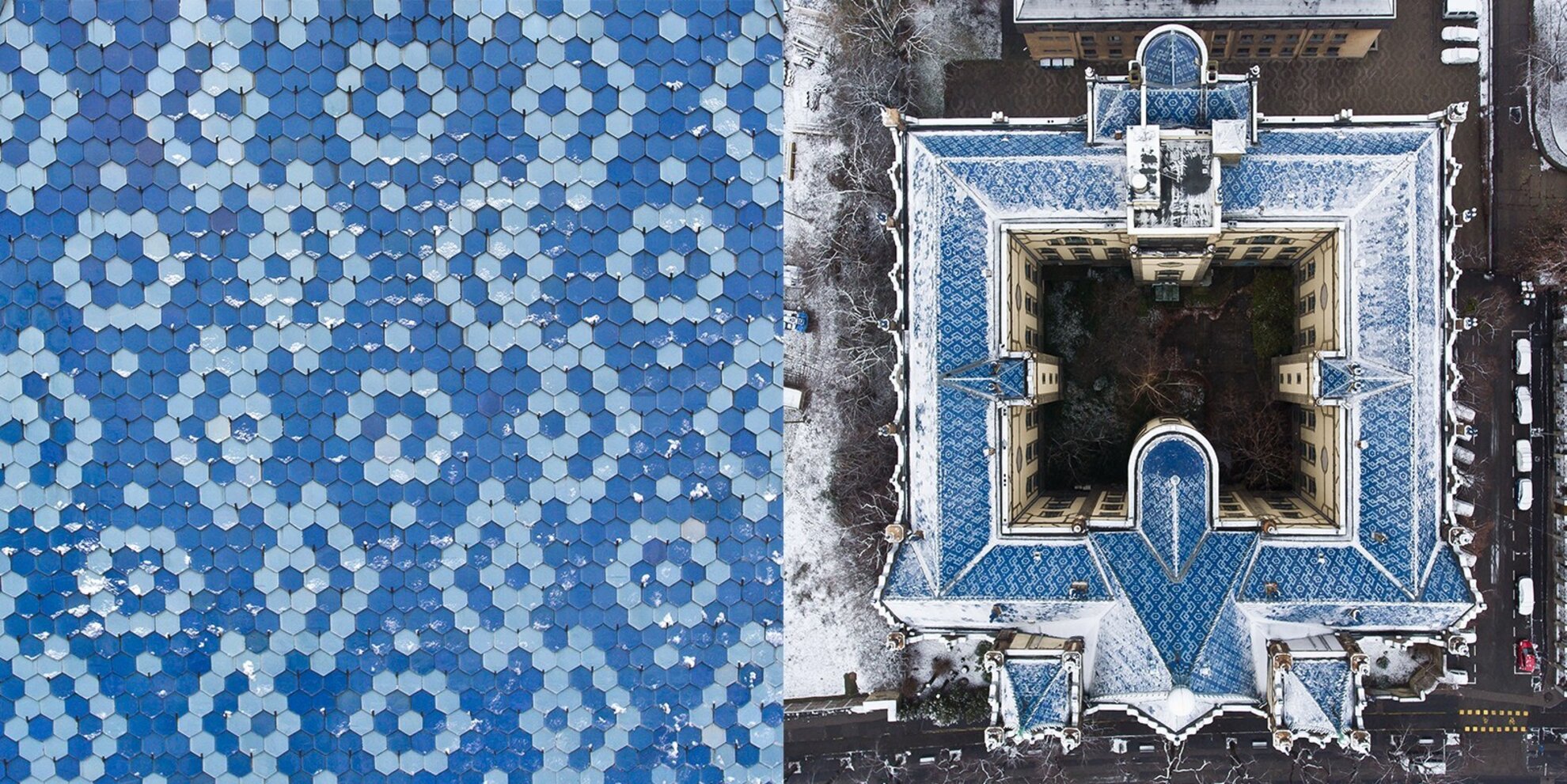
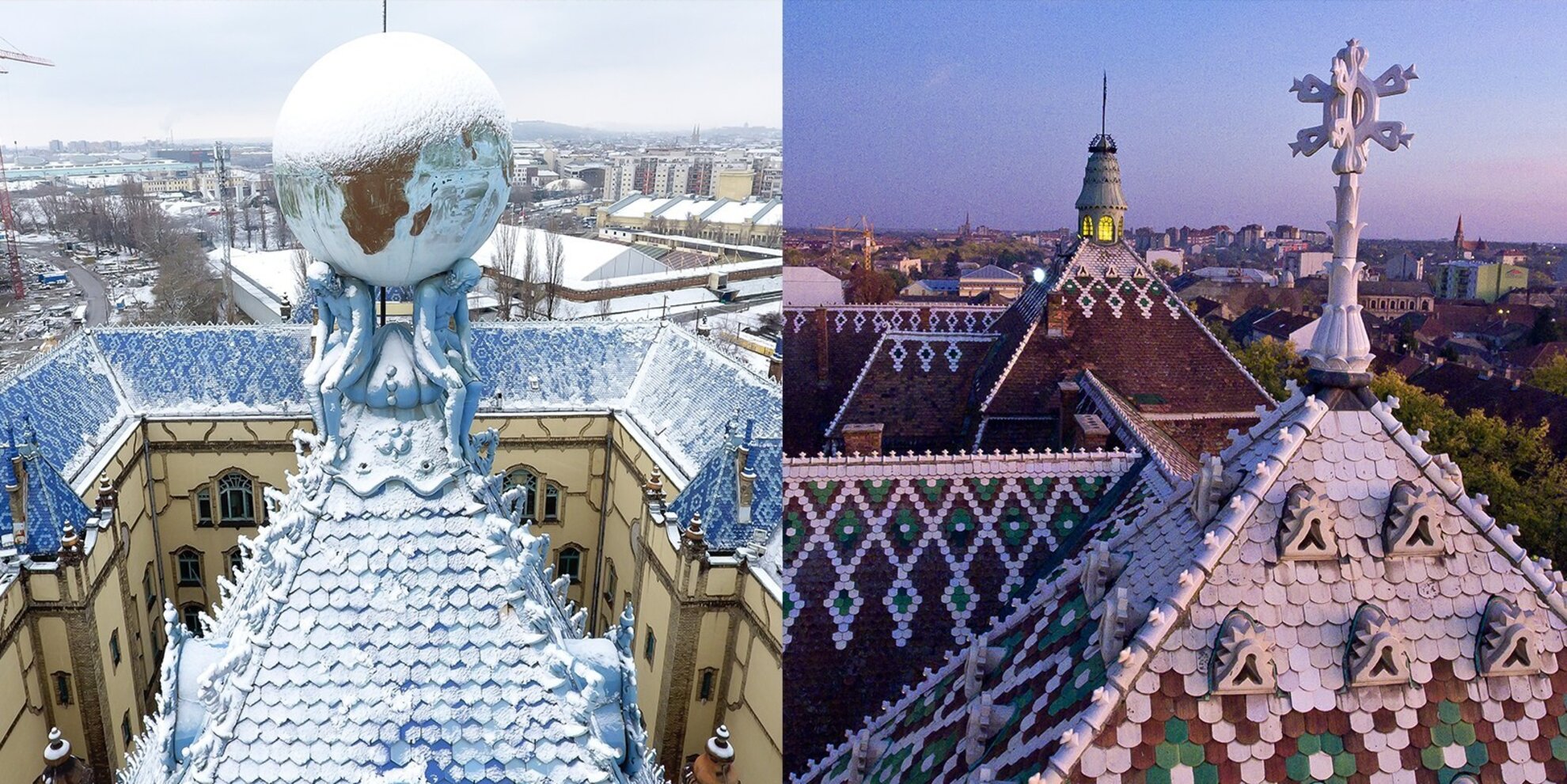
After completing the construction of the Hungarian State Treasury in 1901, Lechner was often asked by his contemporaries why he created such beauty where nobody could see it. His reply was very similar to Gaudí’s – both created for God and the birds of the sky who could see everything perfectly.
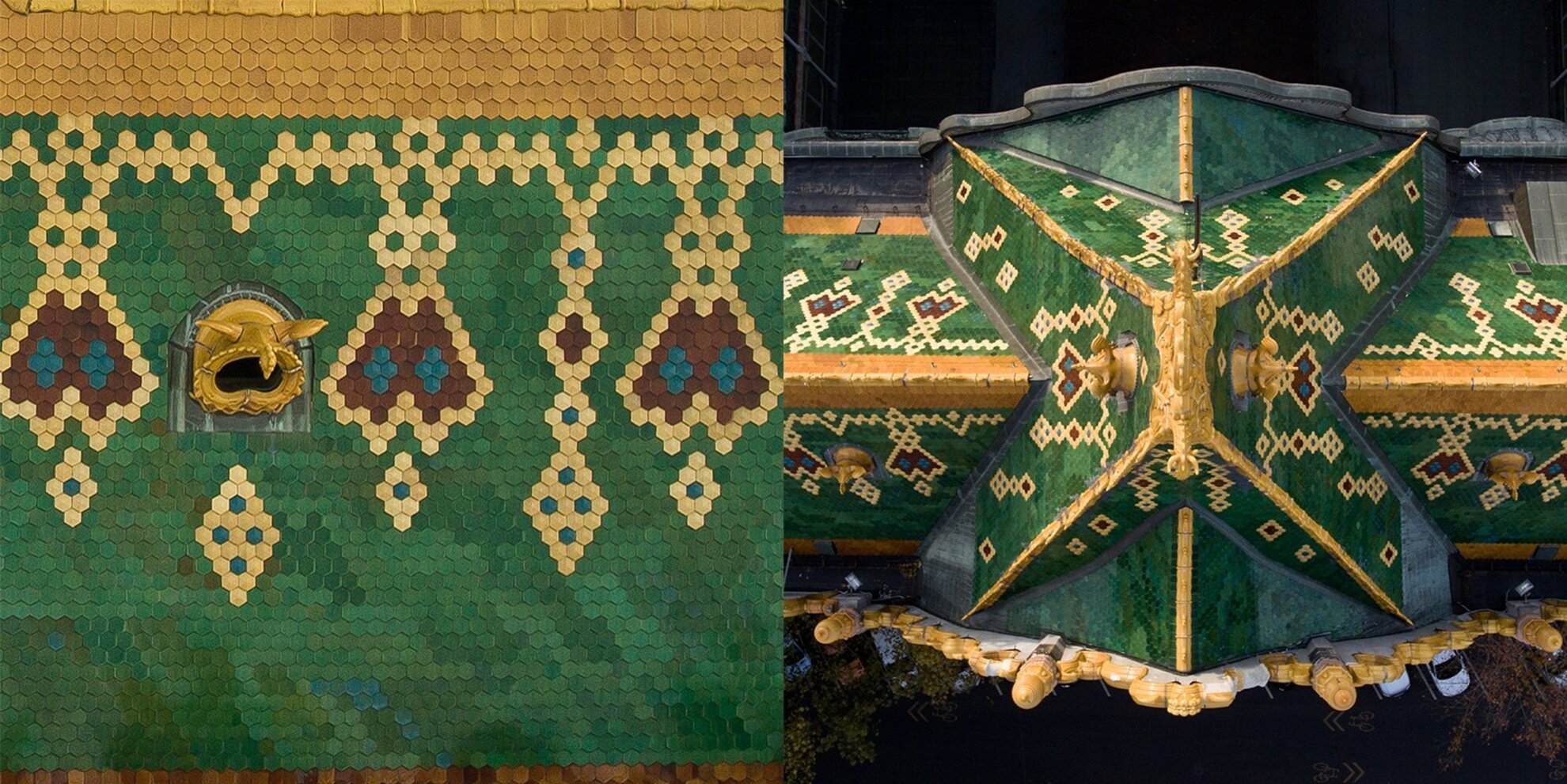
One lesser-known Lechner work is his Szent László Church in Kőbánya, but his characteristic creativity shines through, making drab District X just that little more unique.
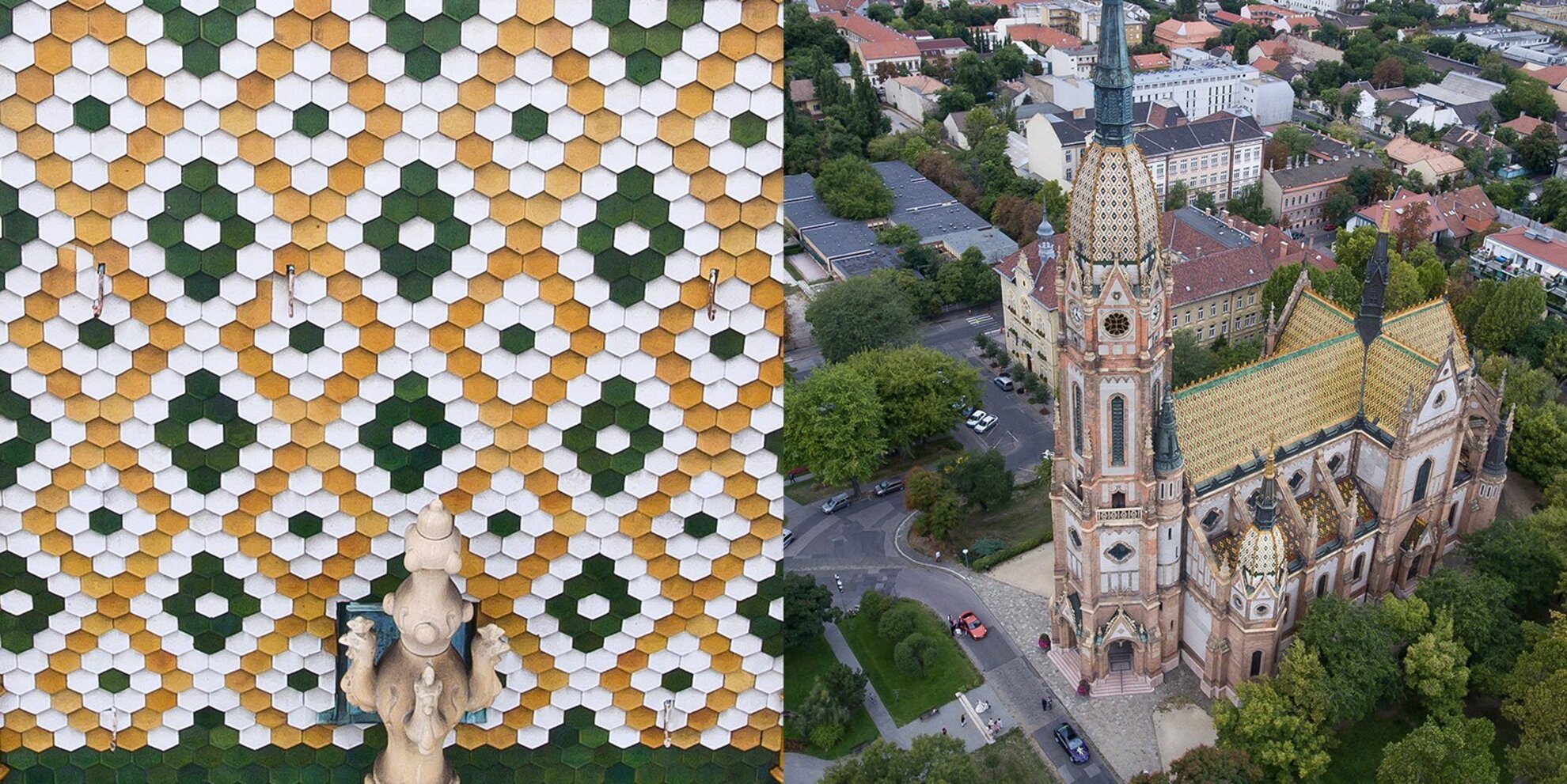
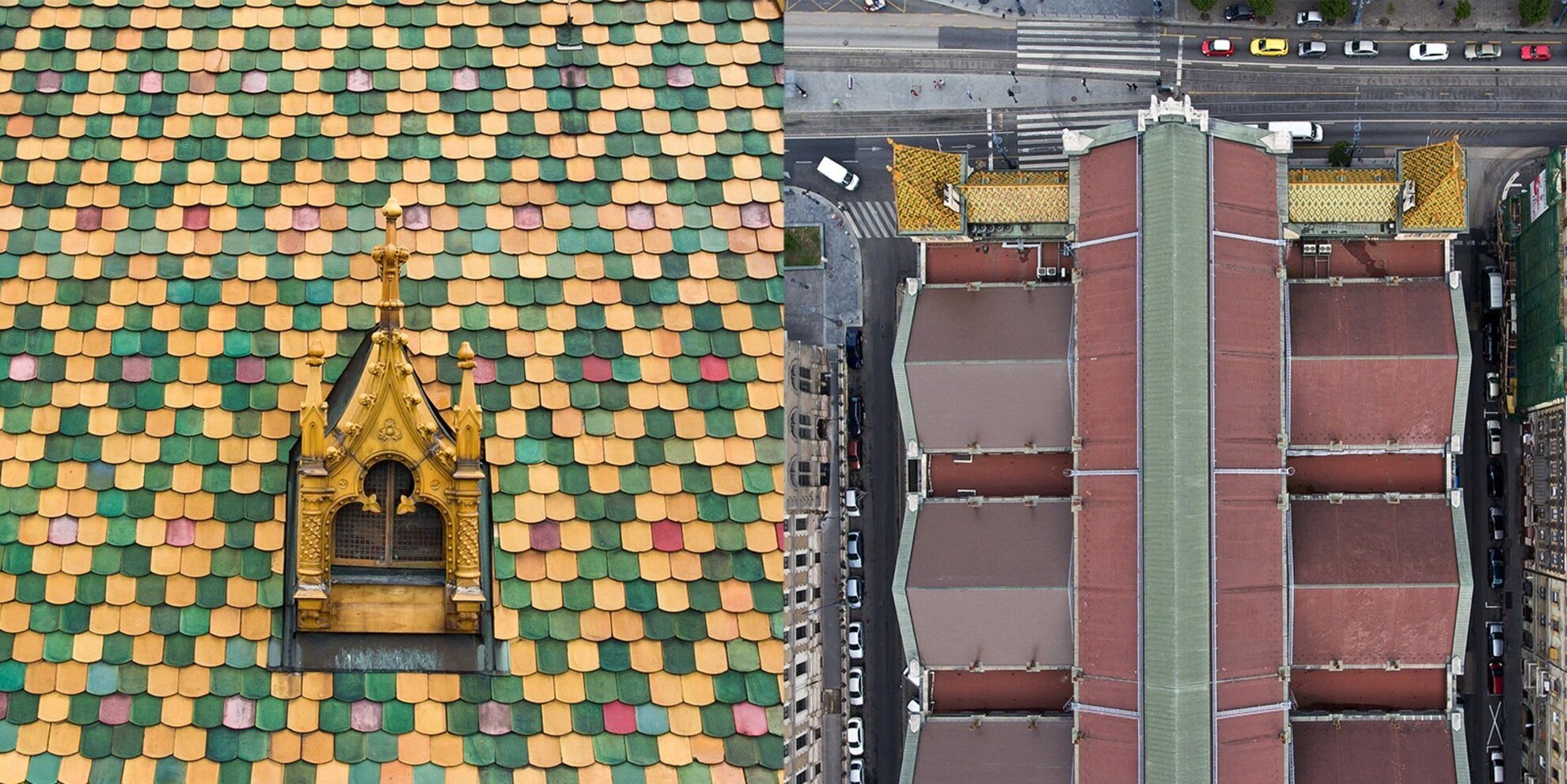
Not only Lechner liked these colourful tiles. Architect Samu Petz also loved experimenting with Zsolnay artefacts, but in a slightly different style. His masterpiece is the guidebook-superstar Great Market Hall, but he also created the BME University building on the Danube embankment and Petz Samu Church in Buda.
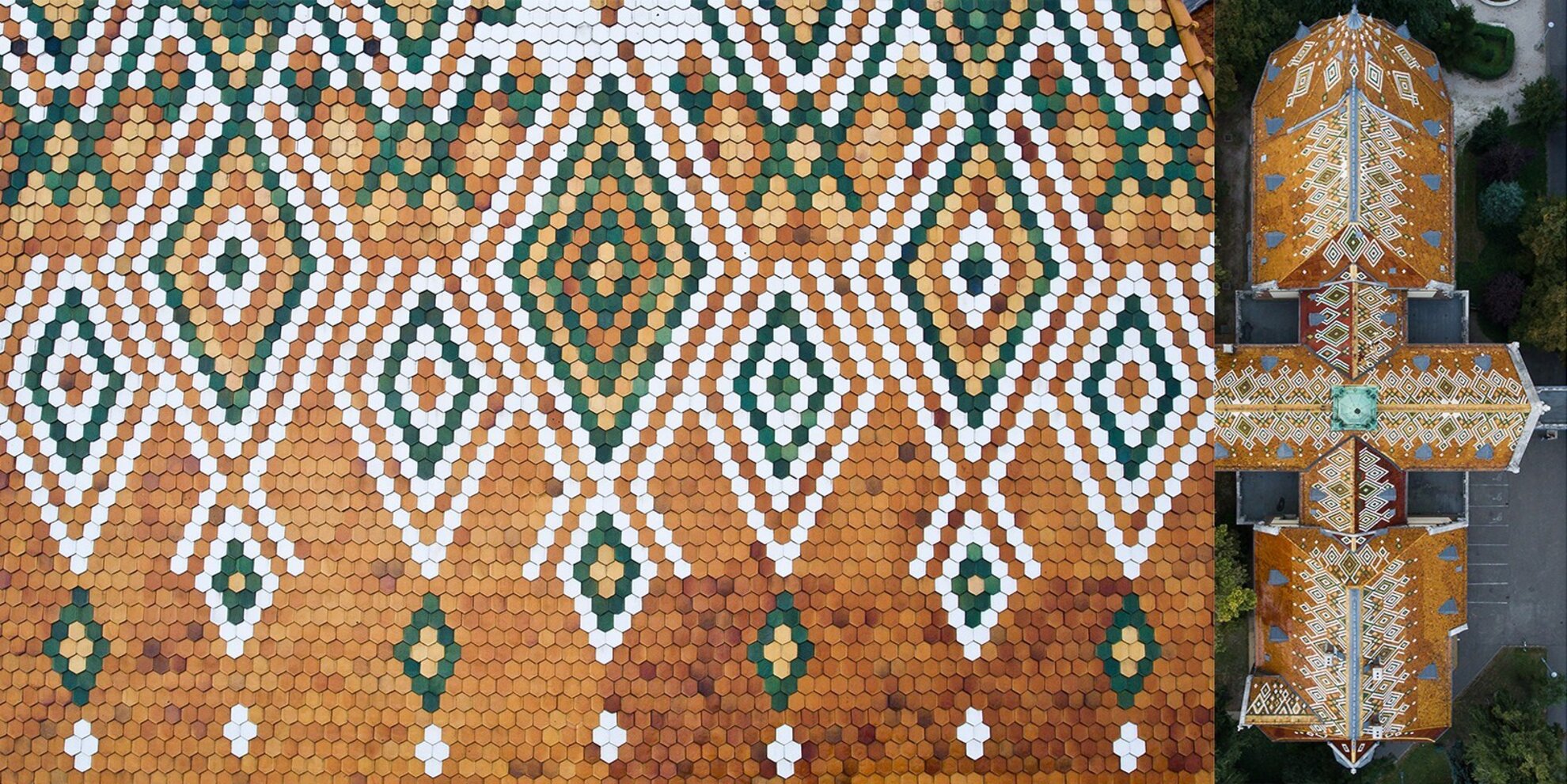
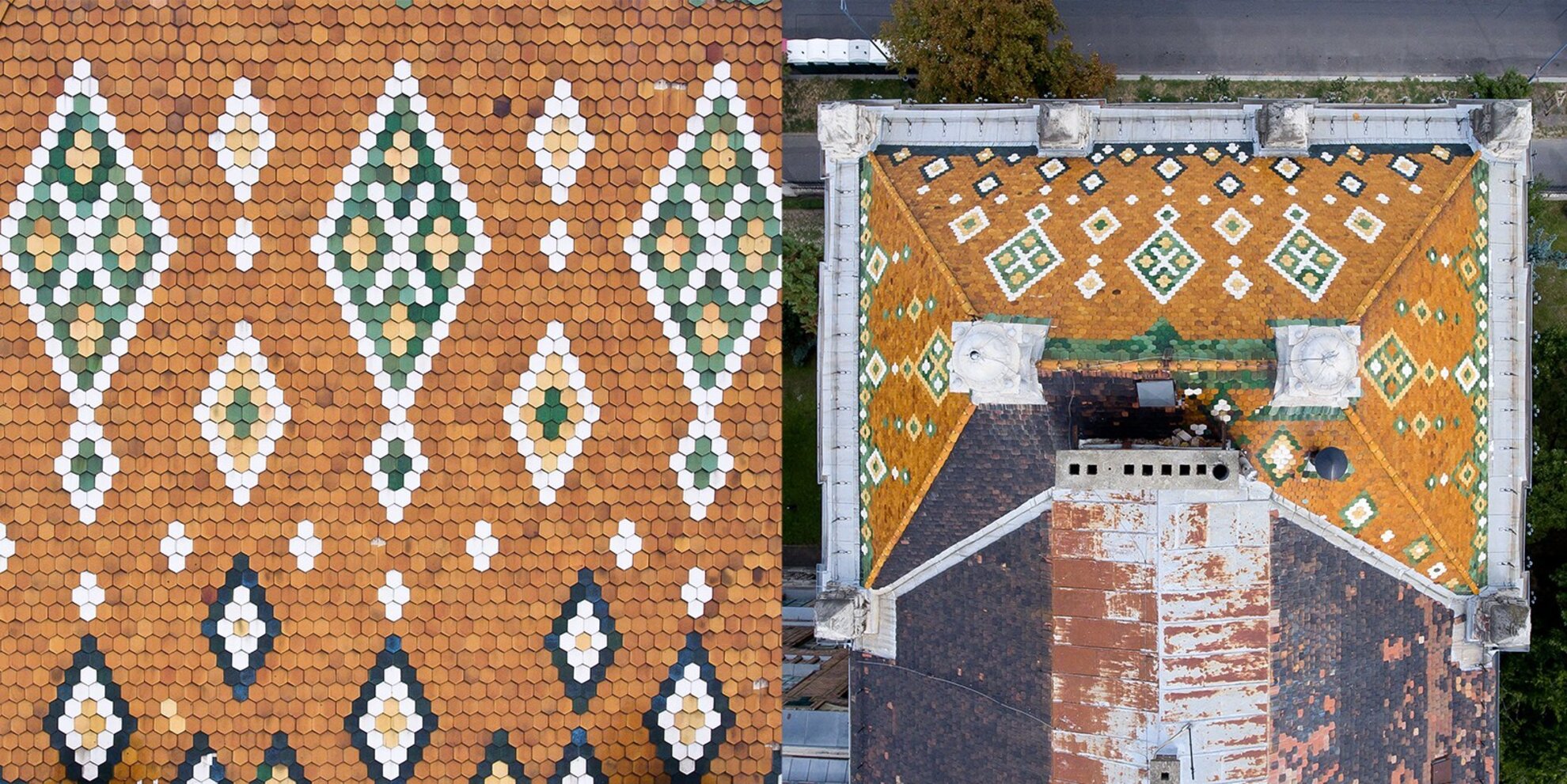
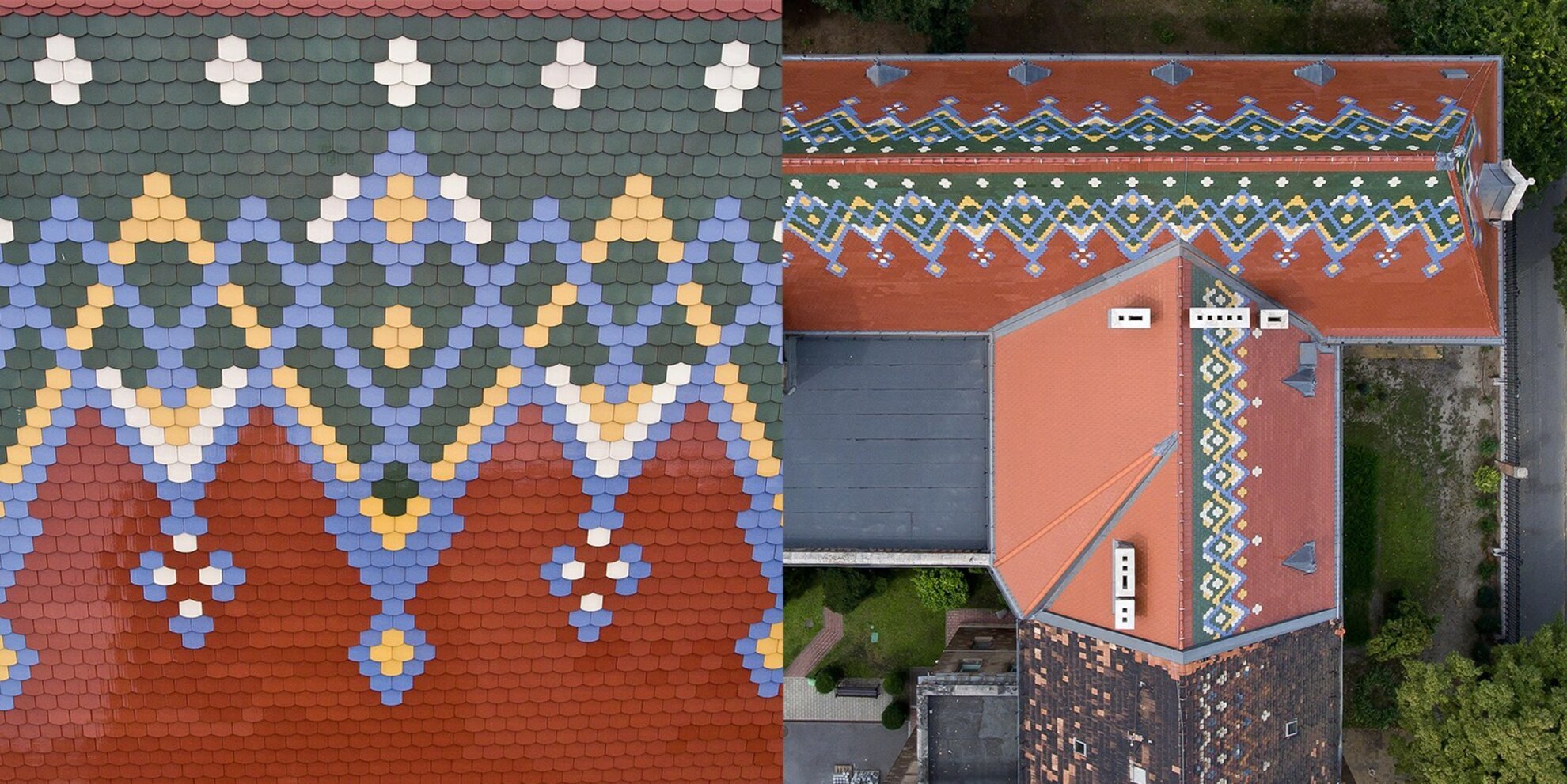
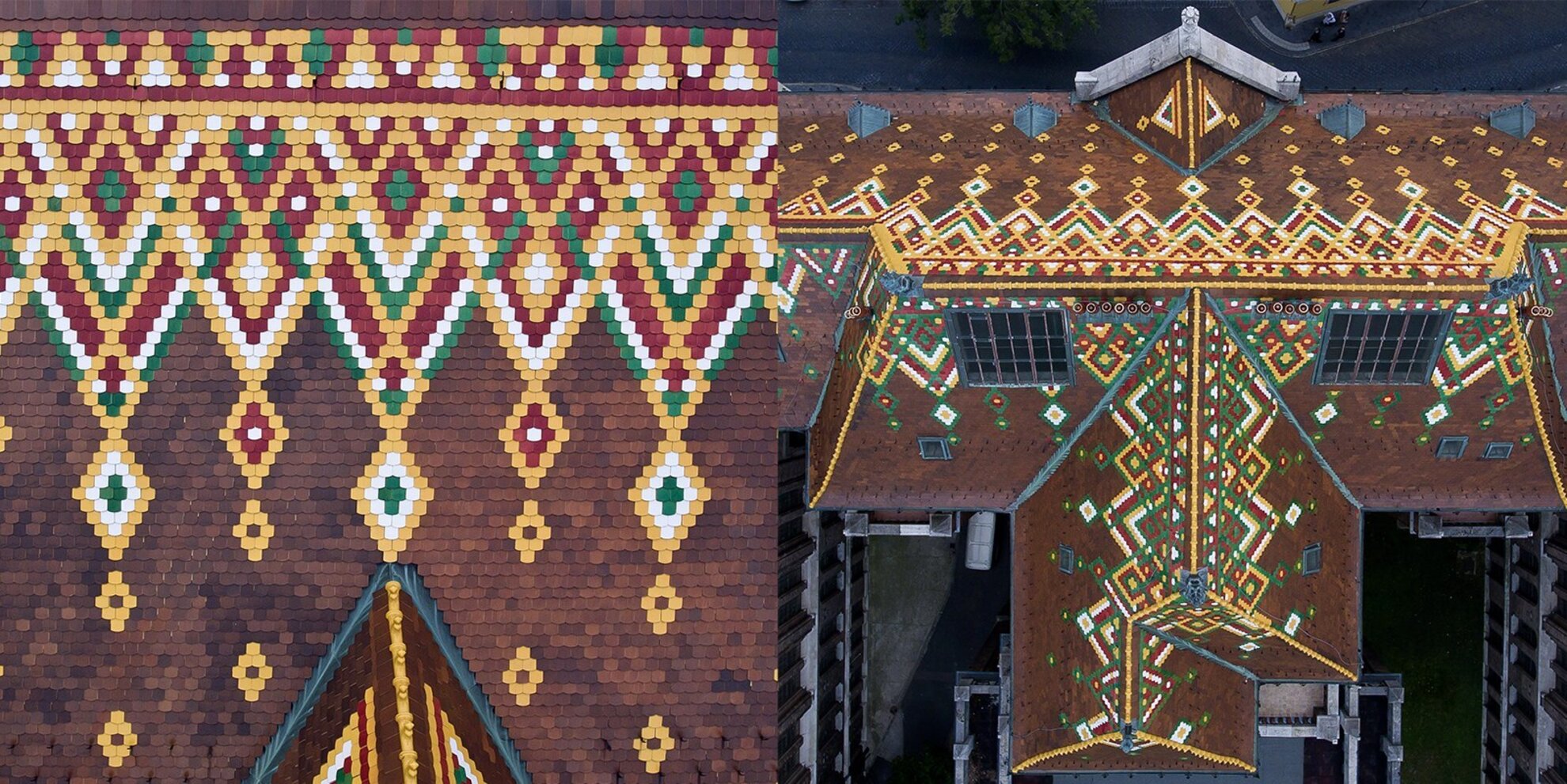
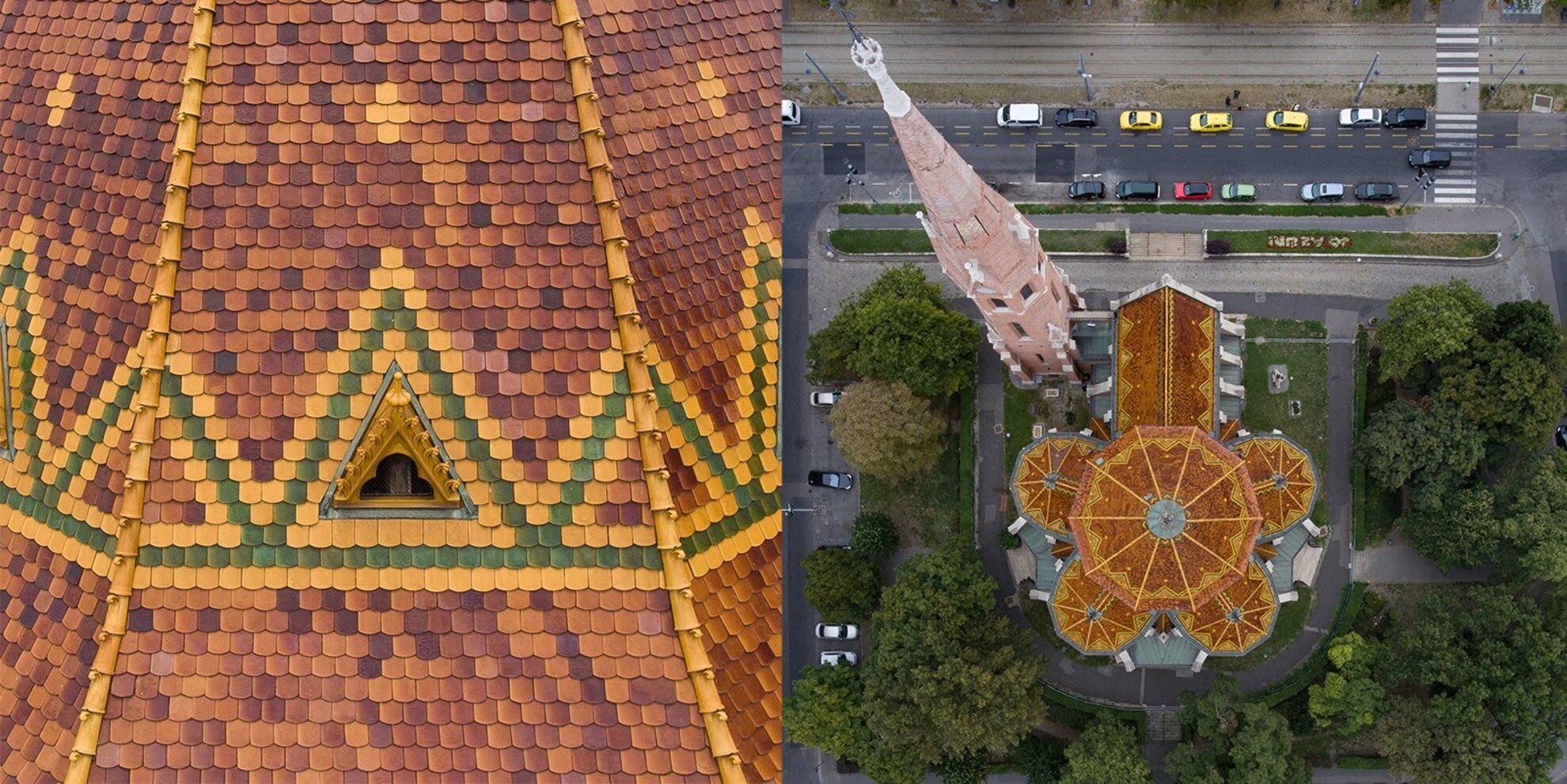
When Frigyes Schulek reconstructed Matthias Church, he also opted for Zsolnay, decorating the Neo-Gothic building with some 150,000 vibrant tiles.
